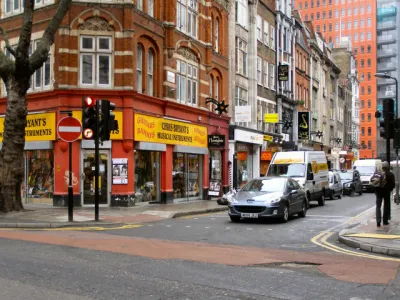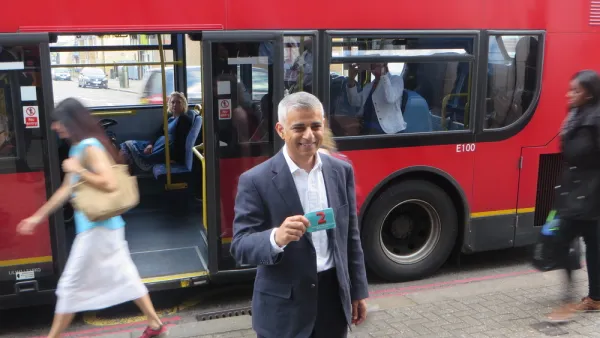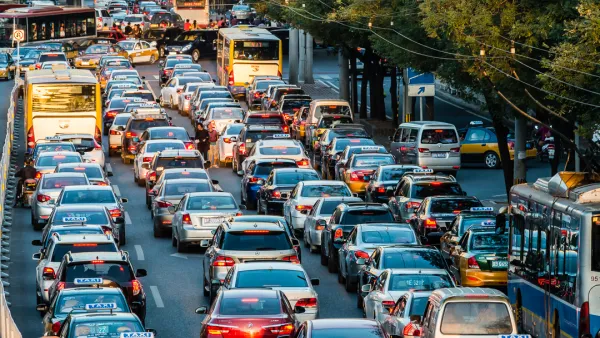An analysis of areas designated as "low traffic neighborhoods" shows a decrease in vehicle ownership rates, a promising sign for the traffic-choked metropolis.

Inspired by the Netherlands' famously bike-friendly urban infrastructure, London's Mini-Hollands program funded Dutch-style improvements in three outer London boroughs. With London consistently ranking in the top ten most congested cities in the world, city leaders hope to emulate their continental neighbors and reduce the need for private cars in and around the city.
The program introduces traffic calming interventions, sometimes removing vehicle traffic from neighborhoods altogether. It also promotes improved bicycle and pedestrian infrastructure that encourages active transportation and keeps residents safe. The goal of the initiative is to encourage a shift from cars to bikes for short trips and reduce vehicle travel within neighborhoods.
A recent analysis of vehicle registration data examined whether the interventions had a measurable effect on vehicle ownership in London's outer boroughs. The findings show that car ownership fell at much higher rates in the areas designated as "low traffic neighborhoods" or LTNs, with vehicle ownership continuing to decline as the program went on. Other active transportation improvements had a smaller effect on vehicle ownership, but areas that received them still reduced their car ownership at higher-than-average rates. The study's conclusions indicate that LTN interventions contribute significantly to a mode shift away from private cars.

National Parks Layoffs Will Cause Communities to Lose Billions
Thousands of essential park workers were laid off this week, just before the busy spring break season.

Retro-silient?: America’s First “Eco-burb,” The Woodlands Turns 50
A master-planned community north of Houston offers lessons on green infrastructure and resilient design, but falls short of its founder’s lofty affordability and walkability goals.

Delivering for America Plan Will Downgrade Mail Service in at Least 49.5 Percent of Zip Codes
Republican and Democrat lawmakers criticize the plan for its disproportionate negative impact on rural communities.

Test News Post 1
This is a summary

Test News Headline 46
Test for the image on the front page.

Balancing Bombs and Butterflies: How the National Guard Protects a Rare Species
The National Guard at Fort Indiantown Gap uses GIS technology and land management strategies to balance military training with conservation efforts, ensuring the survival of the rare eastern regal fritillary butterfly.
Urban Design for Planners 1: Software Tools
This six-course series explores essential urban design concepts using open source software and equips planners with the tools they need to participate fully in the urban design process.
Planning for Universal Design
Learn the tools for implementing Universal Design in planning regulations.
EMC Planning Group, Inc.
Planetizen
Planetizen
Mpact (formerly Rail~Volution)
Great Falls Development Authority, Inc.
HUDs Office of Policy Development and Research
NYU Wagner Graduate School of Public Service





























